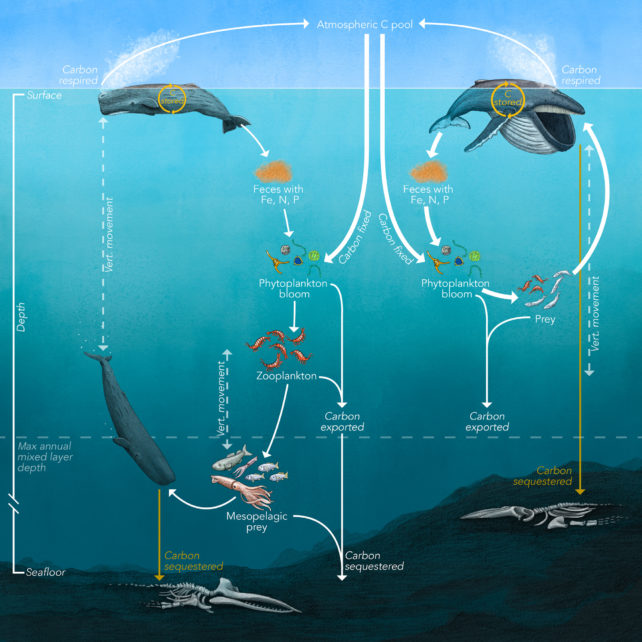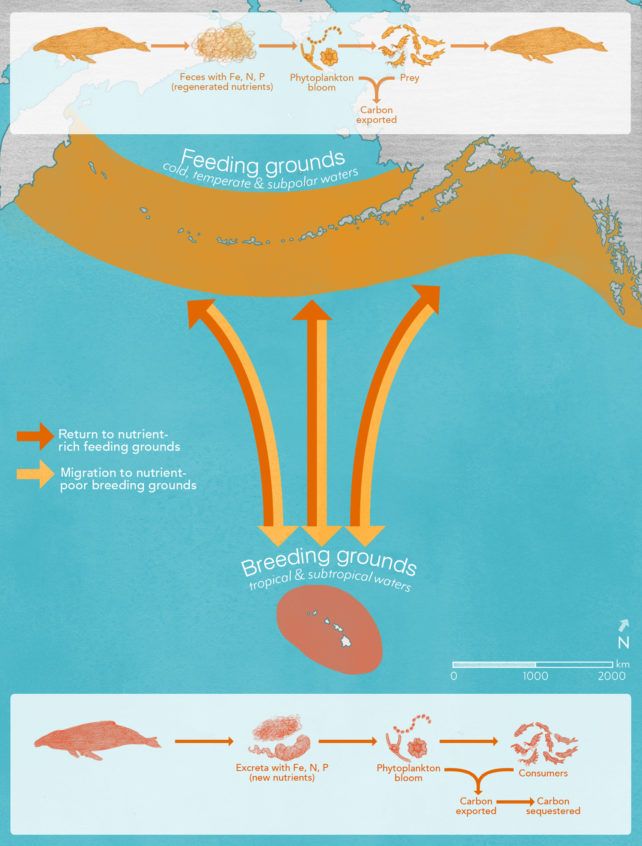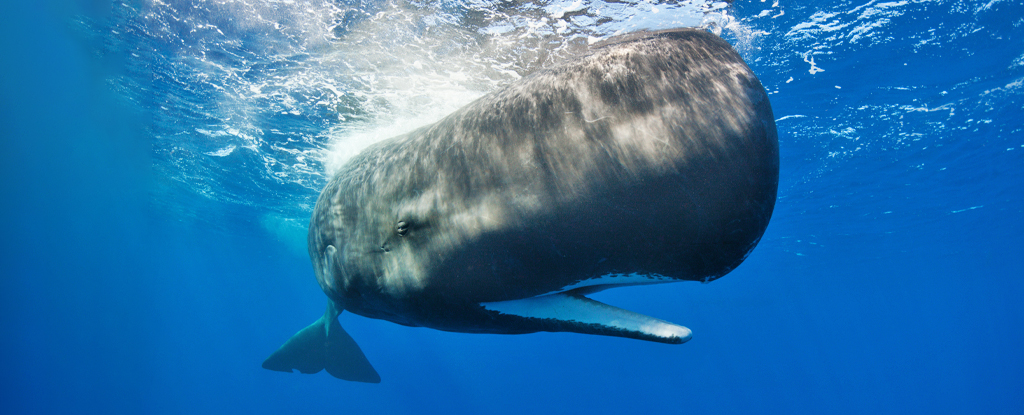Products You May Like
With their massive bodies and giant plumes of poop, great whales can move a whole lot of organic material around our planet. Depending on the animal’s numbers, this might make them a valuable carbon sink, researchers propose.
University of Alaska Southeast marine biologist Heidi Pearson and colleagues review the scientific literature in a new paper, to assess just how much of an impact these giant mammals might have as a natural climate solution.
“Blue (Balaenoptera musculus) and fin (Balaenoptera physalus) whales are the two largest animals to ever exist on Earth,” Pearson and team explain in their review.
“Their size and longevity allow great whales to exert strong effects on the carbon cycle by storing carbon more effectively than small animals, ingesting extreme quantities of prey, and producing large volumes of waste products.”
Great whales, which include the filter feeding baleen whales and toothed sperm whales, play a significant role in the ocean’s biological carbon pump, cycling the carbon between the ocean and atmosphere.
Some of these marine mammals can live up to 200 years. Given artificial attempts at using the ocean depths to sequester carbon ‘leak’ around 75 percent of their stock in half that time, that’s a decent period for locking up whale-sized chunks of carbon.
They eat around four percent of their weight in krill and plankton each day, which adds up to around 8,000 pounds for blue whales.
Their resulting poop tsunamis then feed CO2-sequestering plankton that float near the ocean’s surface with otherwise out-of-reach nutrients like iron and nitrogen. Krill feed on those plankton, passing on those nutrients and carbon to the many animals that feast on them in turn, including penguins, birds, seals, fish and, of course, the whales.

In fact, previous studies have found that despite whales eating krill, higher concentrations of whale often means higher concentrations of krill. Known as the krill paradox, it’s the result of all of that extra whale poop serving as a food supply, boosting the tiny crustacean’s numbers.
Swarms of krill also play a role in the biological carbon pump with their own poop deposits sending carbon into the ocean’s depths.
Before industrial whaling drastically diminished the biomass of great whales by around 80 percent, whales performed a massive chunk of this natural ocean fertilization. Some estimates suggest that before their populations were decimated, sperm whales in the Southern Ocean helped remove close to 2 million tonnes of CO2 a year; now though, this number it’s closer to 200,000 tonnes.
The giant mammals also cycle carbon in other, more dramatic ways, by sinking to the bottom of the ocean on their death. Here, their biomass becomes food for a whole host of other animals, sequestering that carbon deep under water.
There’s also the great whale conveyer belt – most of these whale species migrate from nutrient-rich feeding grounds to nutrient-poor breeding grounds, distributing nutrients as they go.

“Considering that baleen whales have some of the longest migrations on the planet, they potentially influence nutrient dynamics and carbon cycling over ocean-basin scales,” Pearson and team write.
Before industrial whaling, blue whales were transporting about 140 kilotonnes of carbon per year in the Southern Hemisphere, spurring biological activity in their otherwise low nutrient breeding grounds. Now that’s closer to 0.51 kilotonnes.
There’s still many unknowns, the review notes, including uncertainties around how much CO2 whales breathe out into the atmosphere.
What’s more, most estimates of their impacts to date have not included all the species of great whales. So Pearson and colleagues urge for further research to fill in those gaps and provide a better understanding of how to include whales in our mitigation efforts.
But the researchers also point out appreciating whales as a carbon sink and protecting their populations would be far less risky, have greater permanence and higher efficiency than proposed geoengineering solutions, like artificially fertilizing the seas or directly injecting carbon deep into the ocean.
Current threats to these gentle giants include fishery entanglements, ship strikes, noise pollution, plastic pollution and continued whaling. Whales are already being impacted by the consequences of climate change too, with their prey on the move due to changing water conditions.
The good news is that some great whale populations have been increasing, proving that measures we have taken to help them do actually work, including creating marine protection areas as well as speed limits and noise reductions in places where these animals congregate.
Helping great whales flourish would of course only be one part of a much bigger web of nature-based solutions that two-thirds of signatories to the Paris Agreement have committed to, including protecting remaining and restoring lost and degraded ecosystems.
“Whale recovery has the potential for long-term self-sustained enhancement of the ocean carbon sink,” the authors conclude.
“The full carbon dioxide reduction role of great whales (and other organisms) will only be realized through robust conservation and management interventions that directly promote population increases.”
This research was published in Trends in Ecology and Evolution.
